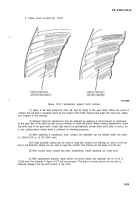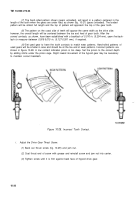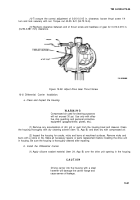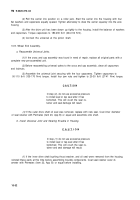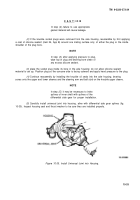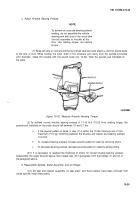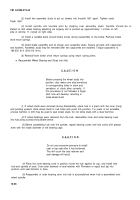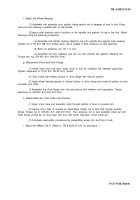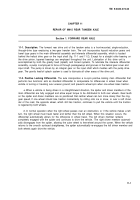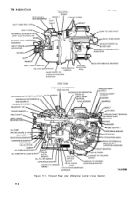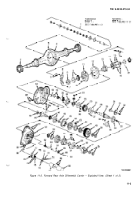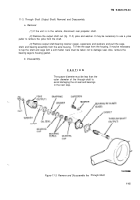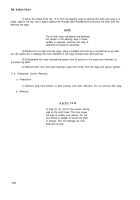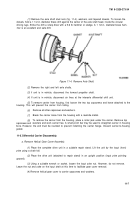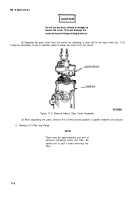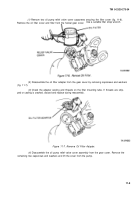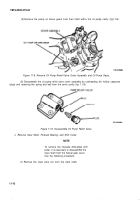TM-9-2320-273-34 - Page 447 of 801
TM 9-2320-273-34
CHAPTER 11
REPAIR OF M915 REAR TANDEM AXLE
Section 1. FORWARD REAR AXLE
11-1. Description.
The forward rear drive unit of the tandem axles is a front-mounted, single-reduction,
through-drive type employing a two-gear transfer train. The unit incorporates hypoid reduction gears and
bevel type gears in the main differential assembly and interaxle differential assembly, which is located
behind the helical drive gear on the input shaft (fig. 11-1 and 11-2). Except for a straight roller bearing on
the drive pinion, tapered bearings are employed throughout the unit. Lubrication of this drive unit is
accomplished by both the gravity feed (splash) and forced systems, To lubricate the interaxle differential
assembly, a pump is employed to force oil through passageways and grooves in the helical gear cover and
input shaft. The pump is driven by an integral gear on the input shaft which meshes with the pump drive
gear. The gravity feed/oil splash system is used to lubricate all other areas of the drive unit.
11-2. Positive Locking Differential.
The axle incorporates a no-spin positive locking main differential that
performs two functions: acts as standard differential to compensate for differences in wheel travel when
vehicle is turning or traveling over uneven ground; and prevents wheel spin when one wheel loses traction.
a.
When a vehicle is being driven in a straightforward direction, the spider and driven members of the
main differential are fully engaged and allow equal torque to be distributed to both rear wheels. Gear teeth
on the spider and driven members are so positioned that neither wheel can turn more slowly than the ring-
gear speed, If one wheel should lose traction momentarily by rolling onto ice or snow, or over a soft shoul-
der of the road, the opposite wheel, which still has traction, continues to pull the vehicle until the traction
is regained by both wheels,
b.
In normal operation when the right wheel passes over an obstruction, or if the vehicle makes a left
turn, the right wheel must travel faster and farther than the left wheel. When this situation occurs, the
differential automatically allows for the difference in wheel travel. The left driven member remains
completely engaged with the spider and continues to drive the vehicle. ‘The right driven member automati-
cally disengages from the spider, allowing the outer wheel to free-wheel around the corner, When the vehicle
returns to the smooth surfaced straightaway, the spider automatically re-engages the left driven member and
both wheels again drive the vehicle,
11-1
Back to Top

